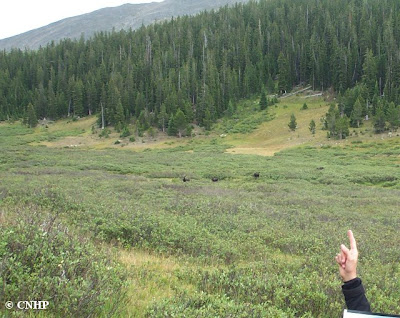The best shot of a moose you're going to see here.
We know that adult moose are extremely large animals (they can be over 6 feet tall at the shoulder, and weigh up to 1,000 pounds), so it seems that such a large animal should be easy to photograph.
However, if you have ever tried to take a picture of a moose, you have probably experienced the Massive Object Optical-Spatial Event or MOOSE phenomenon. This apparently happens when our knowledge of the size of an object greatly inflates our perception of how it will appear in a photo. It is common for researchers to return from the field, download or develop their photos, and say "Hey - where is the moose? I thought I got a picture of it!"
For instance, there are two moose in this photo:
No really, there are.
See?
It may be helpful to add a moose locating element to your photo:
Must...squint...harder!
Even if you manage get close to a moose (not recommended), or use the zoom feature, there is no telling if the moose will cooperate:
Yoo-hoo - look over here!








No comments:
Post a Comment
Thanks for your comment!
Please note that all comments are moderated, so there may be a delay of some hours (especially over the weekend or at night Colorado time) before your comment shows up.